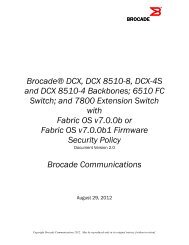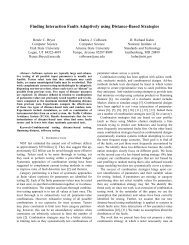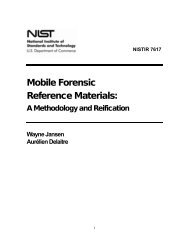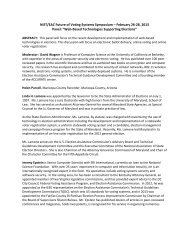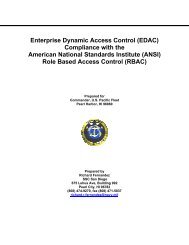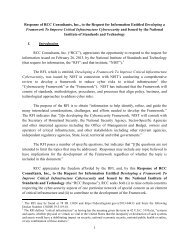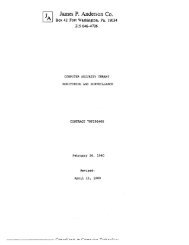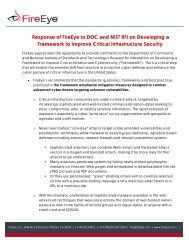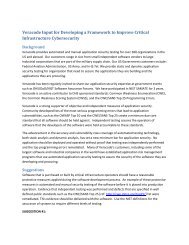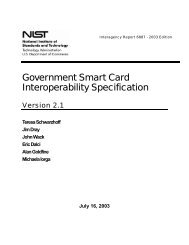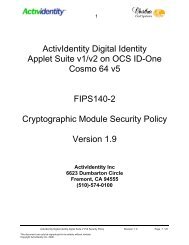Part 1: General - Computer Security Resource Center - National ...
Part 1: General - Computer Security Resource Center - National ...
Part 1: General - Computer Security Resource Center - National ...
You also want an ePaper? Increase the reach of your titles
YUMPU automatically turns print PDFs into web optimized ePapers that Google loves.
March, 2007<br />
and then provide evidence that the key was correctly decrypted (e.g., by encrypting a random<br />
challenge from the CA, then the owner has established POP. However, when a key pair is<br />
intended to support key establishment, POP may also be afforded by using the private key to<br />
digitally sign the certificate request (although this is not the preferred method). The key<br />
establishment private key shall not be used to perform signature operations after certificate<br />
issuance.<br />
As with user registration, the strength of the security infrastructure depends upon the methods<br />
used for distributing the key to an RA or CA. There are many different methods, each<br />
appropriate for some range of applications. Some examples of common methods are:<br />
1. The public key and the information identified in Section 8.1.5.1.1 is provided by the<br />
public key owner in person, or by an authorized representative of the public key owner.<br />
2. The identity of the public key owner is established at the RA or CA in person or by an<br />
authorized representative of the public key owner during user registration. Unique,<br />
unpredictable information (e.g., an authenticator or cryptographic key) is provided at this<br />
time by the RA or CA to the owner as a secret value. The public key and the information<br />
identified in Section 8.1.5.1.1 is provided to the RA or CA using a communication<br />
protocol protected by the secret value. The secret value should be destroyed by the key<br />
owner as specified in Section 8.3.4 upon receiving confirmation that the certificate has<br />
been successfully generated. The RA or CA may maintain this secret value for auditing<br />
purposes, but the RA or CA should not accept further use of the secret value to prove<br />
identity.<br />
When a specific list of public key owners are pre-authorized to register keys, identifiers<br />
may be generated in bulk. In this case, it is critical to protect the secret value from<br />
disclosure, and the procedures must demonstrate that the chain of custody was<br />
maintained. The secret value’s lifetime should be limited, but must allow for the public<br />
key owner to appear at the RA or CA, generate their keys, and provide the public key<br />
(under the secret value’s protection) to the RA or CA. Since it may take some time for<br />
the public key owner to appear at the RA or CA, a two or three week lifetime is probably<br />
reasonable.<br />
When public key owners are not pre-authorized, the RA or CA shall generate the<br />
identifier in the user’s presence. In this case, the time limit may be much more restrictive,<br />
since the public key owner need only generate their keys and provide the public key to<br />
the CA or RA. In this case, a 24-hour lifetime for the secret value would be reasonable.<br />
3. The identity of the public key owner is established at the RA or CA using a previous<br />
determination of the public key owner’s identity. This is accomplished by “chaining” a<br />
new public key certificate request to a previously certified digital signature key pair. For<br />
example, the request for a new public key certificate is signed by the owner of the new<br />
public key to be certified. The signing private key used to sign the request should be<br />
associated with a verification public key that is certified by the same CA that will certify<br />
the new public key. The request contains the new public key and any key related<br />
information (e.g., key use and parameters). In addition, the CA shall obtain assurance of<br />
public key validity and assurance that the owner possesses the associated private key.<br />
96



